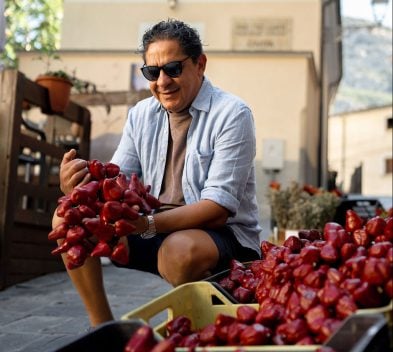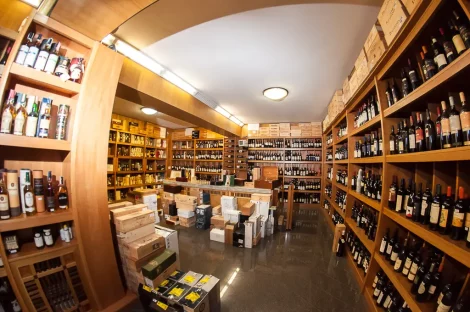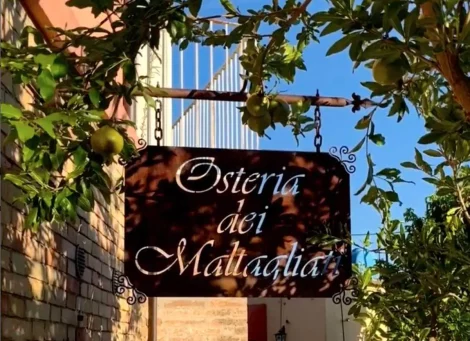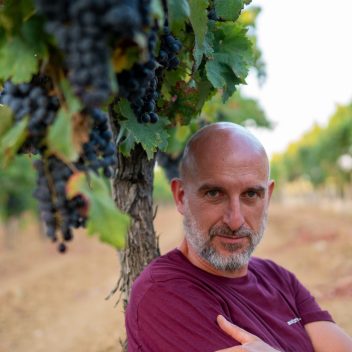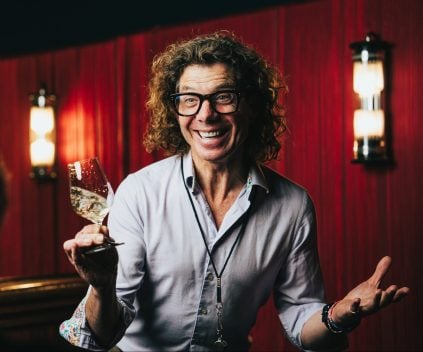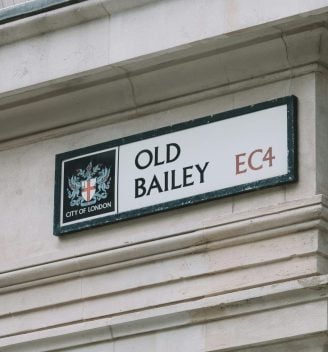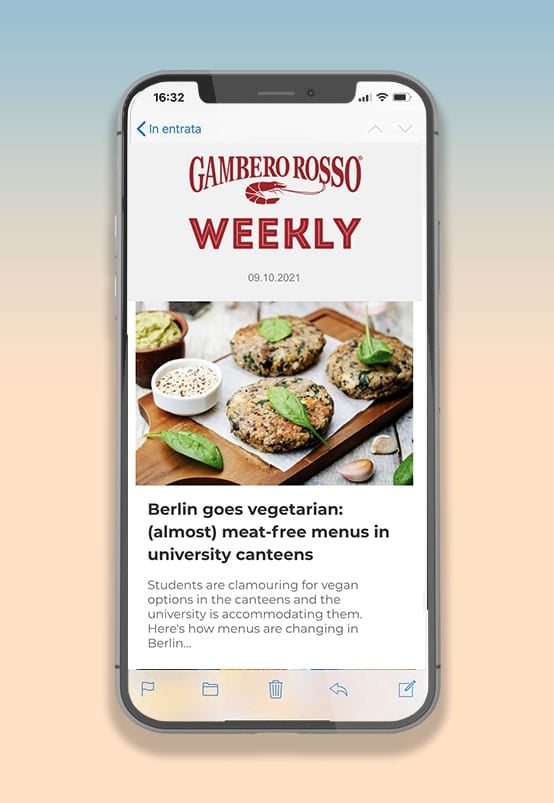One single table. Ten people. A garden. One goal: sharing.
In Badia a Passignano, in the heart of Chianti Classico, a new immersive culinary project has come to life under the banner of Osteria di Passignano – owned by the Marchesi Antinori – led by chef Matteo Lorenzini, trained in the school of Ducasse. This is an experience that blends a reconnection with nature, especially with the earth, and a certain nostalgia for grand family lunches in country homes.
Everyone sits together at a communal table and awaits the (bucolic, for the occasion) inspiration of the chef, who presents vegetables in creative forms, all accompanied by the wines – a guaranteed quality – from the Marchesi Antinori estates.
And if “eating is an agricultural act,” as writer Wendell Berry once claimed, the team at Passignano has taken the commandment literally, offering it to each guest who sits at that table.
Dinner in the garden
The conductor is chef Lorenzini, who operates in a specially designed outdoor show kitchen: among hanging fresh carrots, garlic, and onions, jars of seeds on display, pans reminiscent of a grandmother’s copper cookware, and firewood fuelling grills and smokers where mostly vegetables – from the adjacent bioactive garden – sizzle away.
It’s a triumph of ash-roasted courgettes, grilled lettuces, with a place also for slowly cooked chicken, served – like other meats – as a complement to a main ingredient that is always a vegetable.
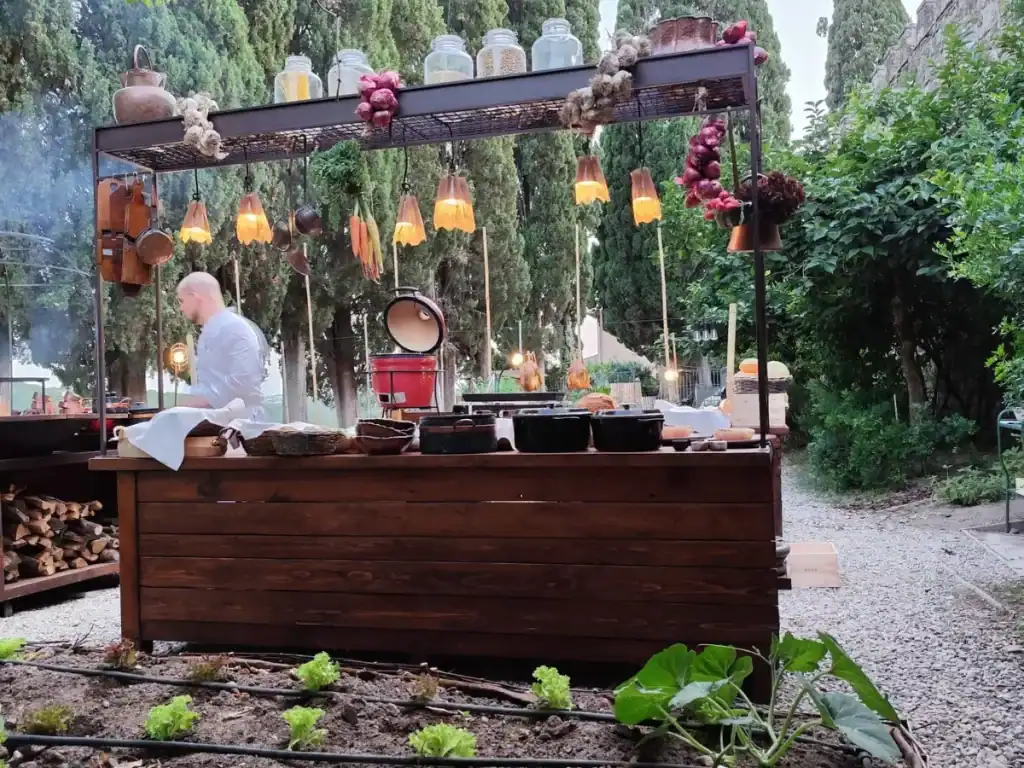
The ultimate aim of the dinner in the garden is to rediscover the quality of vegetables by placing them at the centre of the meal. Sharing is the mantra of this experience: everyone sits together, the chef finishes the dishes directly on the table, enriching the meal with gastronomic storytelling filled with memories, personal experiences, and stories that explain the origin of each dish.
What’s on the Menu in the Badia Garden
After cooling off in the shade of Chianti’s trees with an elderflower kombucha, the stage is set. The small garden takes centre stage with oversized gourd leaves, Catalonian chicory, marjoram, lettuces, thyme, and cauliflower varieties like snowball and purple. Against this backdrop of vegetable and peasant glory stands a large wooden table, right in the centre of the garden, shaded by a reed canopy that protects from the last rays of the sunset and later offers shelter from the fresh Chianti summer breeze that accompanies the chatter, the clinking of wine glasses, and occasionally the pleasant silence of diners savouring the chef’s vegetal creations.
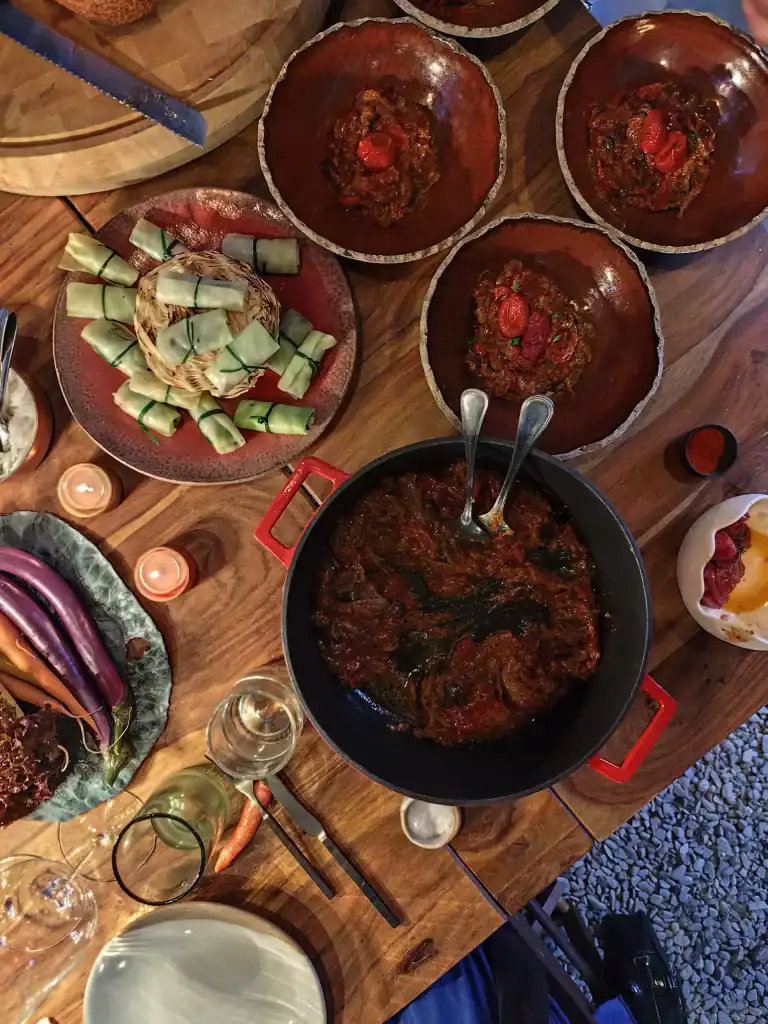
The welcome at the table begins with a sort of Saint John’s water – flowers and herbs in a bowl – used to purify hands before the meal, immediately making clear: here, one reconnects with the land and nature. The meal then begins with raw vegetables: pea pods, radishes, cucumbers, served in baskets to share, all accompanied by basil and cucumber water aimed at purification. If sharing with others is the ultimate philosophy of the dinner in the garden, it is expressed clearly through chef Lorenzini’s cooking.
On the table, traditional Tuscan recipes mingle with influences from far-off countries – distant in geography, but close in flavour.

This is how an aubergine pappa al pomodoro is served, inspired by the Iranian dish Mirza Ghassemi; or a Middle Eastern-style hummus paired with ratatouille brimming with the flavours of Tuscan tomatoes. Tomatoes – another highlight of the dinner and of the summer – are finely sliced and placed atop a tall focaccia reminiscent of the Genoese variety.
There’s room for a journey starting with vegetables and recalling ancestral cooking methods: grilled peas, ash-roasted courgettes, grilled lettuce with chanterelle mushrooms, and chef Lorenzini’s delightful touches like pickled baby cucumbers.
The Bioactive Garden of Badia
If the bioactive garden at Badia isn’t sufficient to supply all the ingredients for chef Lorenzini’s plant-based kitchen, local small producers come into play: about 75% of the ingredients come from hand-picked local artisans of the land. Everything is sustainable: from rainwater irrigation for the garden to zero food waste – all scraps are reused, for instance, to create stocks for the dishes.
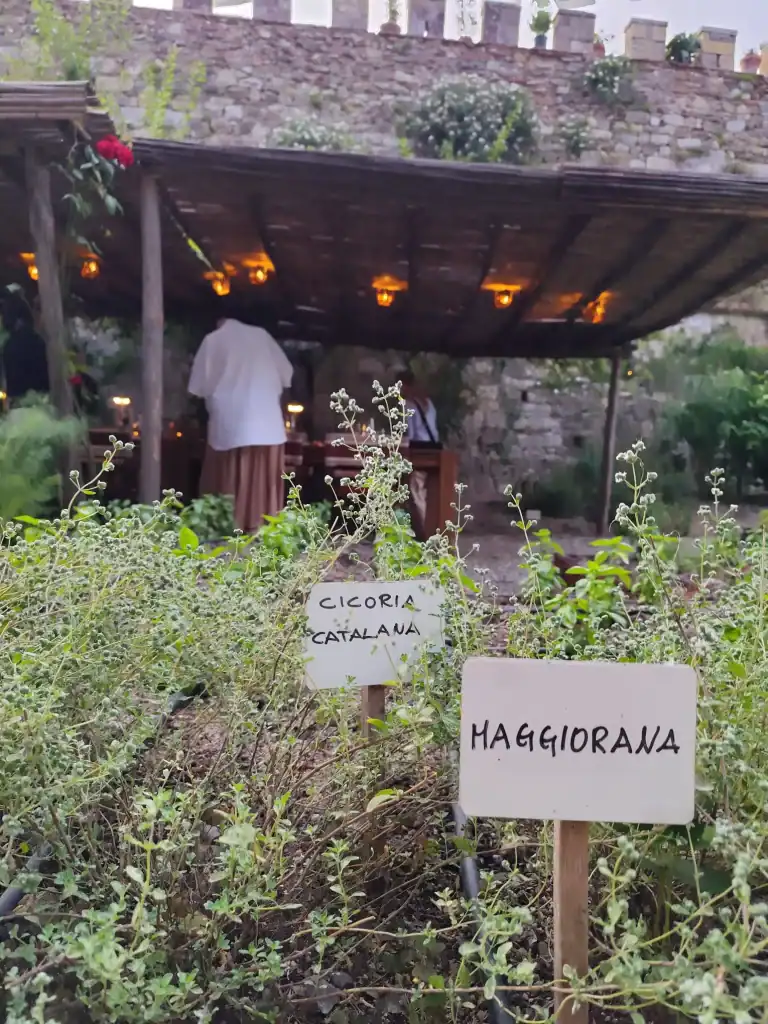
A complete experience: visiting the Badia
Before dinner, to make the experience truly unique and complete, guests are invited to visit the Badia that hosts the garden. After a toast in the atrium of the historic monastery, founded in 395 AD and currently home to only five monks, the visit begins. The exterior is meticulously maintained, with even small rabbits tending the lawn. It’s no coincidence that animals are part of life at the Badia: peacocks, ducklings, hens, and roosters all play their role in the monastery – some work, some offer companionship.
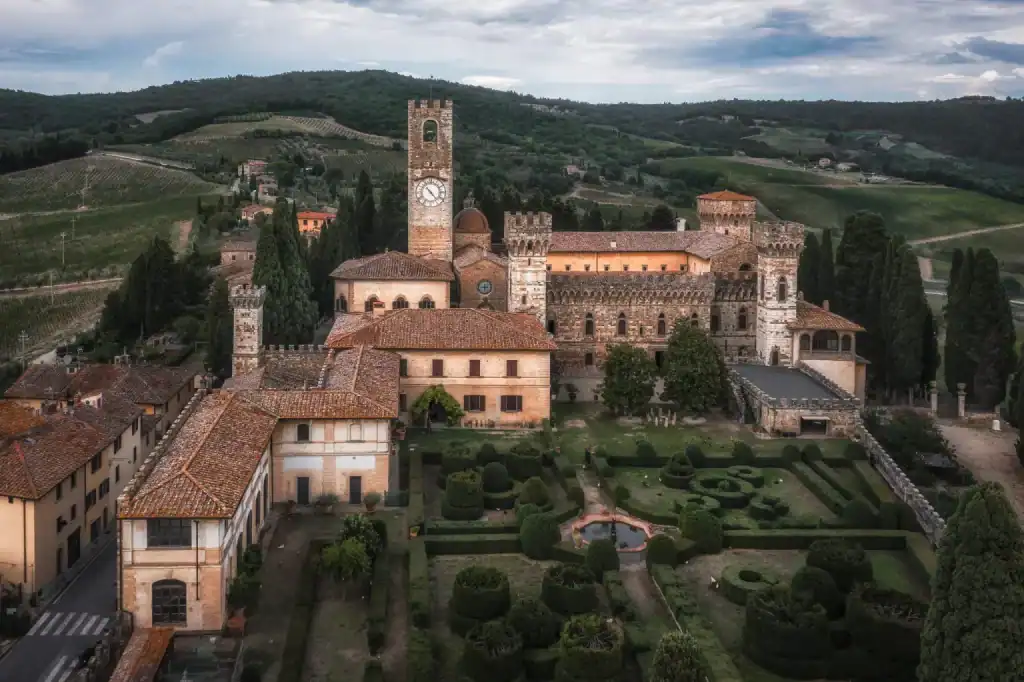
The tour includes the monastery’s interior spaces still used by the monks, where one encounters an ancient monastic kitchen and a refectory housing a great frescoed masterpiece, the Last Supper painted by Domenico Ghirlandaio.
The silent walk continues through to the ancient wine cellars of the monastery, where the Marchesi Antinori wines – Badia a Passignano and Chianti Classico DOCG Gran Selezione – are matured. After the sacred spaces have been visited, the large door closes behind you, and you breathe in the priceless air of the Chianti hills.
The experience is featured on the website, under the “L’Orto di Badia” section, but guests must contact Osteria di Passignano for more information and to make a reservation.

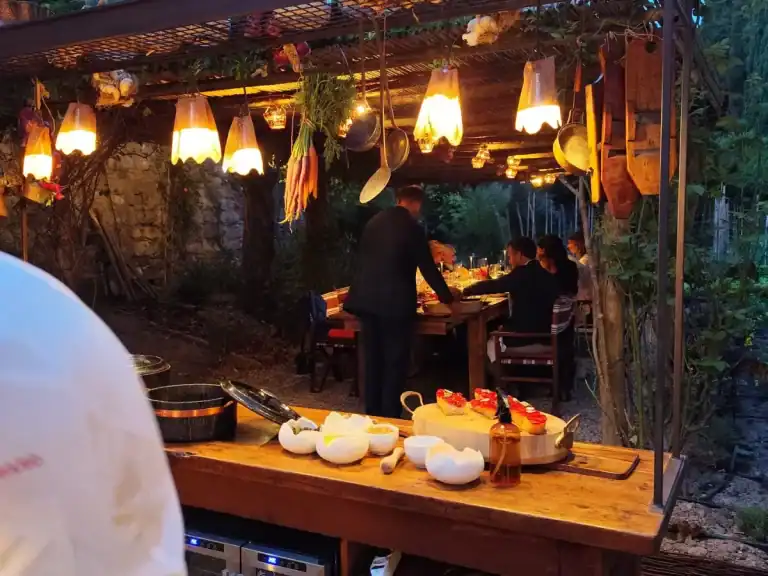
 The social media star resurrecting Italy's forgotten culinary classics
The social media star resurrecting Italy's forgotten culinary classics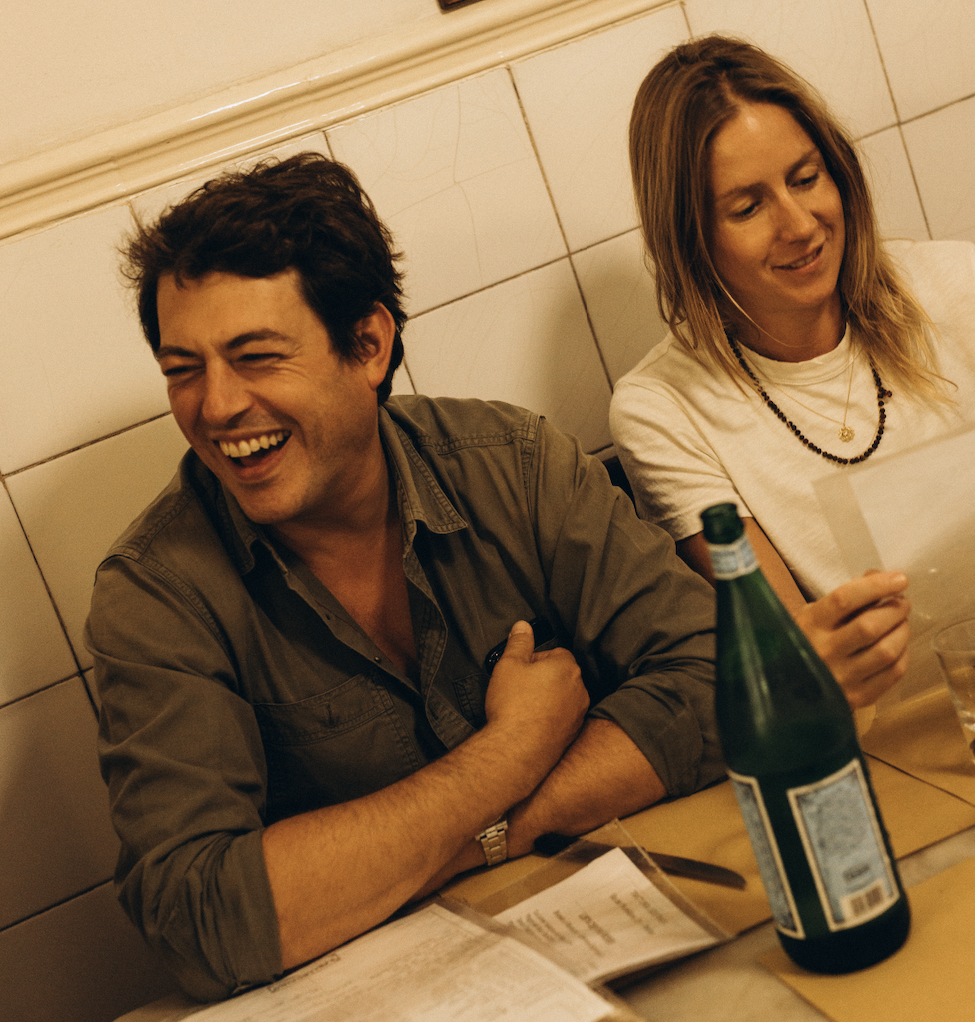 Giovanni Mazzei brings a taste of Florence to London
Giovanni Mazzei brings a taste of Florence to London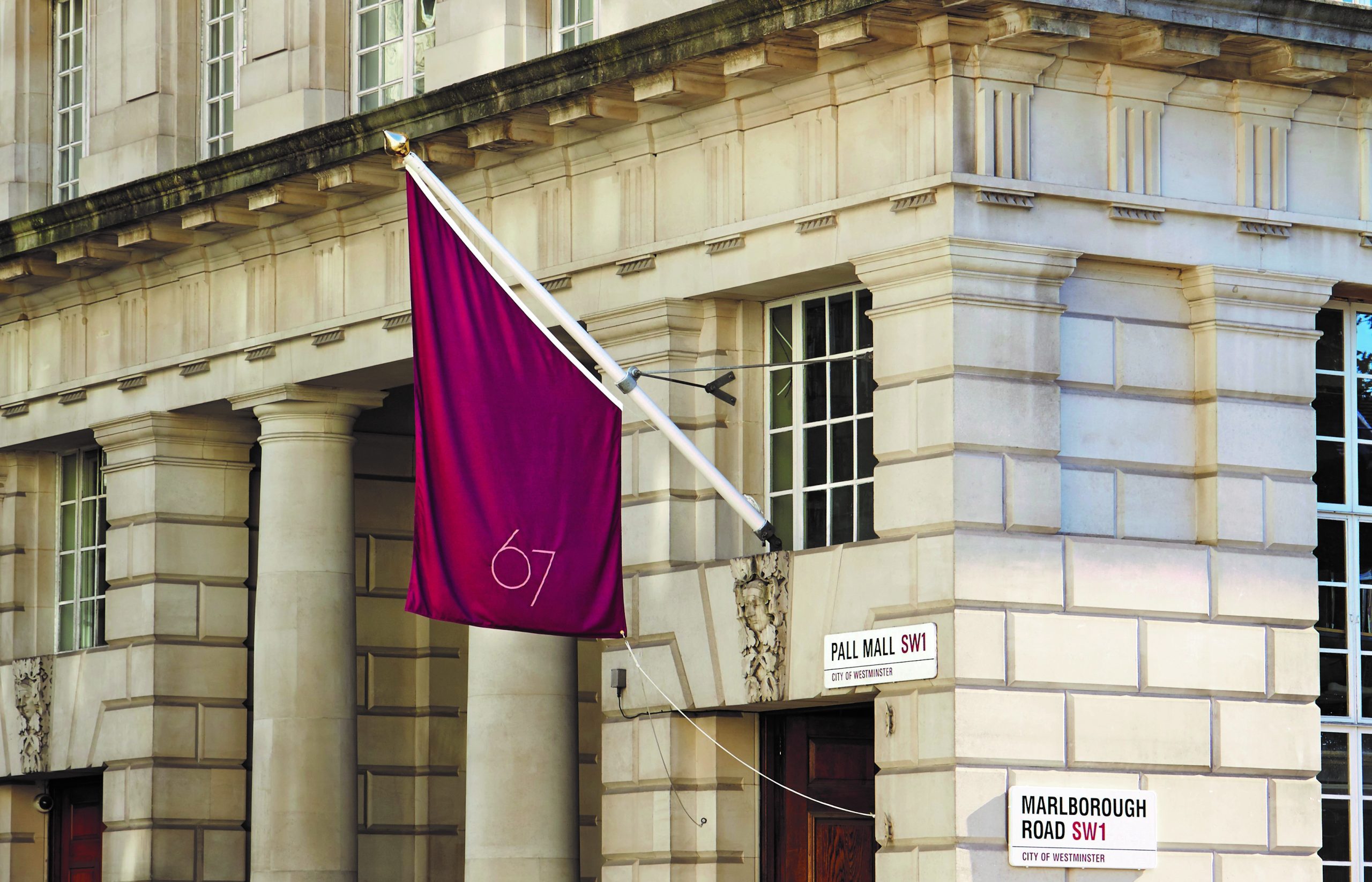 Burgundy dominates but Italy is rising: a look at London's fine wine trends
Burgundy dominates but Italy is rising: a look at London's fine wine trends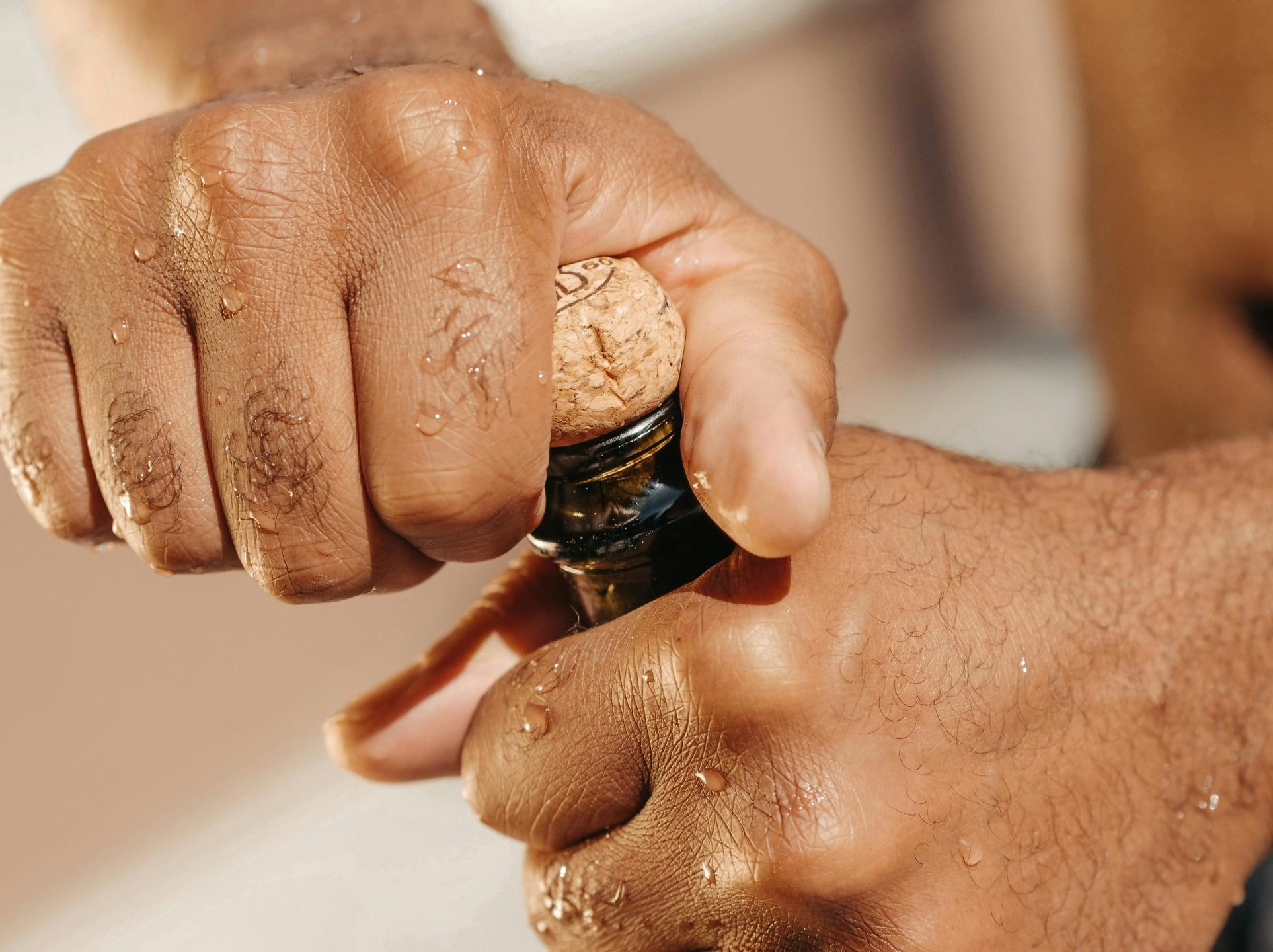 Costco Prosecco recalled over exploding bottle fears
Costco Prosecco recalled over exploding bottle fears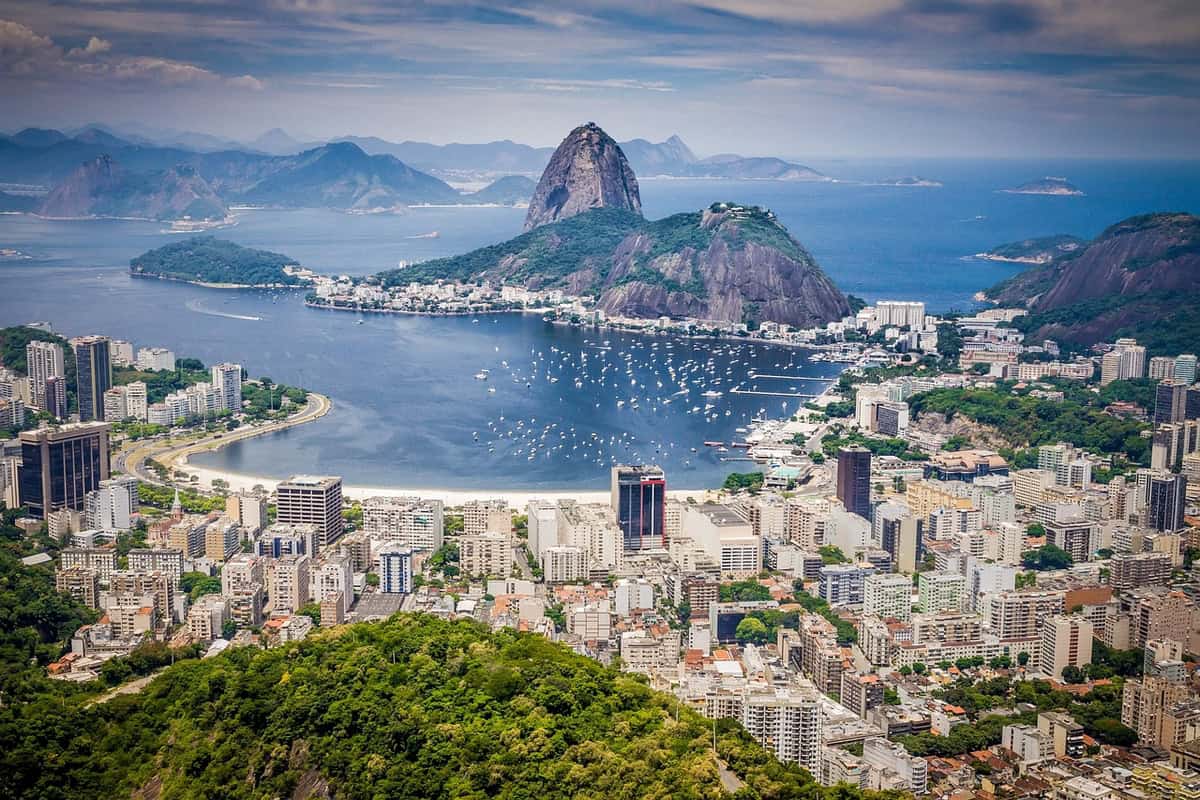 The Consorzio Vino Chianti heads to Brazil: “An attentive public and a dynamic market”
The Consorzio Vino Chianti heads to Brazil: “An attentive public and a dynamic market”